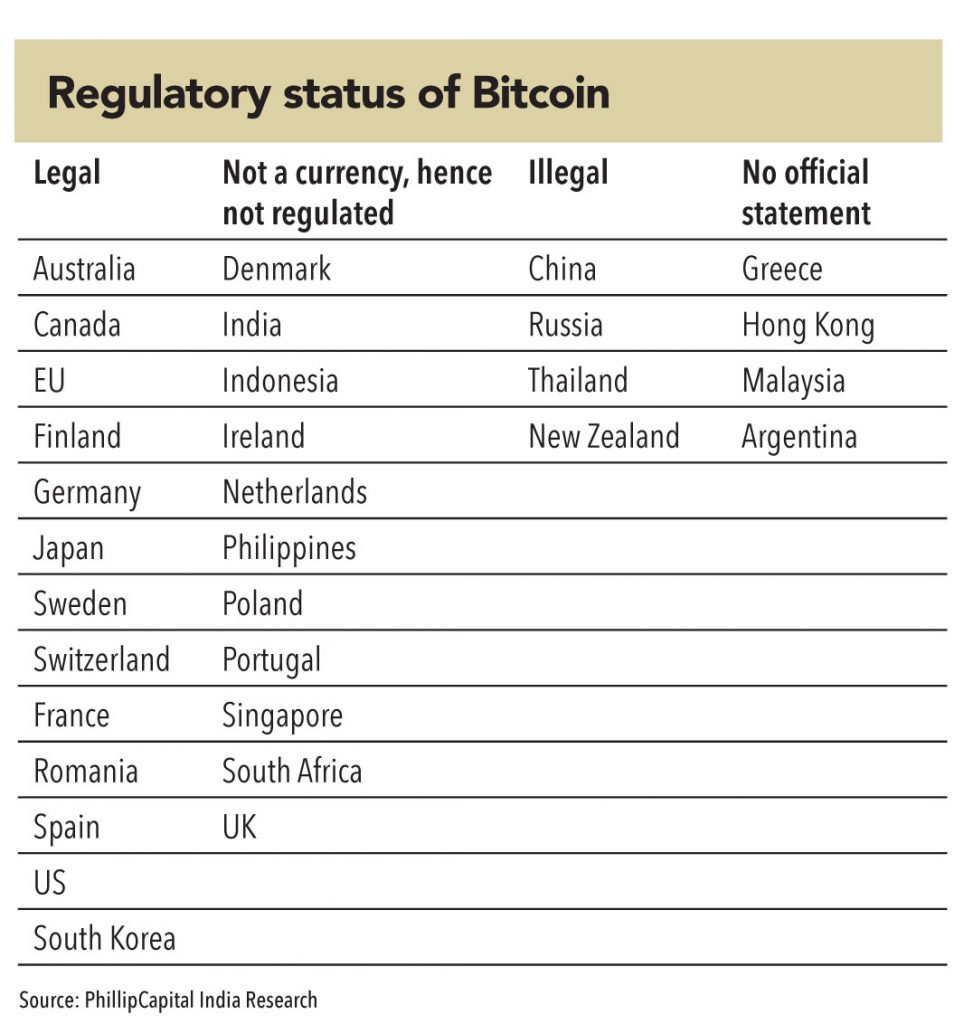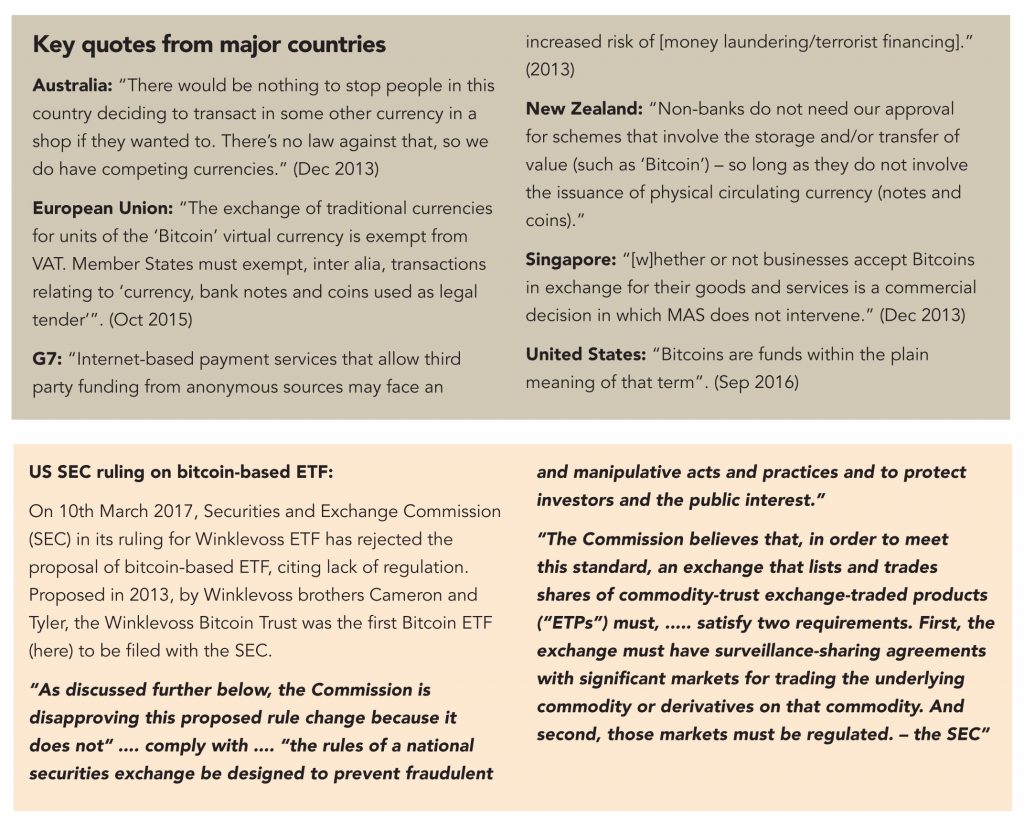The adoption of Blockchain, as discussed above, is currently in the early-adopters phase – yet to cross the ‘chasm’. Like all disruptive technologies do, Blockchain will also face a lot of resistance from people who love ‘status quo’ and are reluctant to change (and the share of these kinds of people is generally very high). However, even for those willing to take the plunge and test the waters, Blockchain adoption is not free of challenges; the proponents of this technology will have to address these to facilitate its smooth and quick adoption.
• Emerging technology: The Blockchain technology is currently at a nascent stage. Hence, it will require time and awareness to spread-out benefits of using this technology. The kind of transactions that can be made using Blockchain, omnipresence of digital contracts, absence of adequate number of third-parties to verify/encode/add the transaction to the ledger – are all areas that are gradually evolving.
• Uncertainty over regulatory frameworks: World over, fiat currencies are printed and regulated by central banks of respective countries. Transactions in other domains (insurance etc.) are all regulated by their respective regulators. There is virtually no role of a regulator in a Blockchain platform – something that even transacting parties are yet to become comfortable with. Also, being virtual in nature (Bitcoin or other platforms), the current regulators have no jurisdiction over Blockchain.
• Large energy consumption: The Blockchain network requires ‘mining’ in order to verify/encode/add the transaction to the ledger. This continuous mining consumes substantial amount of energy, which leads to increase in energy cost.
• Integration issues
• Cost: Though the Blockchain network is said to be a cost-effective way for transaction (as there are no intermediaries), the initial cost of setting up requires significant capital investments.
The biggest challenge for Blockchain platform will be how to handle regulators. Blockchain’s biggest impact is expected to be on the BFSI sector – where it promises to eliminate both time and costs related to various types of transactions. But regulators play a very active role in this segment – the sole body responsible for any dispute resolution. Since Blockchain platforms, in effect, remove these dispute resolvers, clients will always be confused about whom to turn to in case of a dispute in any transaction. Reassurances, such as presence of smart contracts and decentralised cryptographically coded ledger that ensure no disputes occur – provide little solace. Customers would always want an answer to ‘what if’. Also, current financial regulators across the world are keeping a close eye on the fast adoption of Blockchain technology by various participants in the industry.


Conclusion
There is little doubt that Blockchain promises to be one of the (if not THE) most disruptive technologies that the world has ever seen. If implemented with caution, taking all stakeholders along, it can truly transform the way the world transacts today – rendering scores of technologies and hundreds of business obsolete. It is no longer a question of whether the world will adopt it, but when and in what format.
However, the technology is still in nascent stage, and has to face many winters before it settles into an eternal summer. While the possibilities with Blockchain are immense, the challenges are manifold too. Like all disruptive technologies, Block chain will also face a lot of resistance from people who love ‘status quo’ and are reluctant to change. The proponents of Blockchain need to ensure that, to begin with, they do not project Blockchain as a panacea. In its initial and even much later stages, Blockchain will co-exist with current platforms and processes. Hence, the implementation of Blockchain has to be in an ‘AND’ format, rather than an ‘OR’.
The stage is set for its performance. Only time will tell whether Blockchain is a productive rain cloud or just a hyper-inflated balloon that bursts soon after the audience’s first clap. The next two years should provide a clear direction.
Subscribe to enjoy uninterrupted access